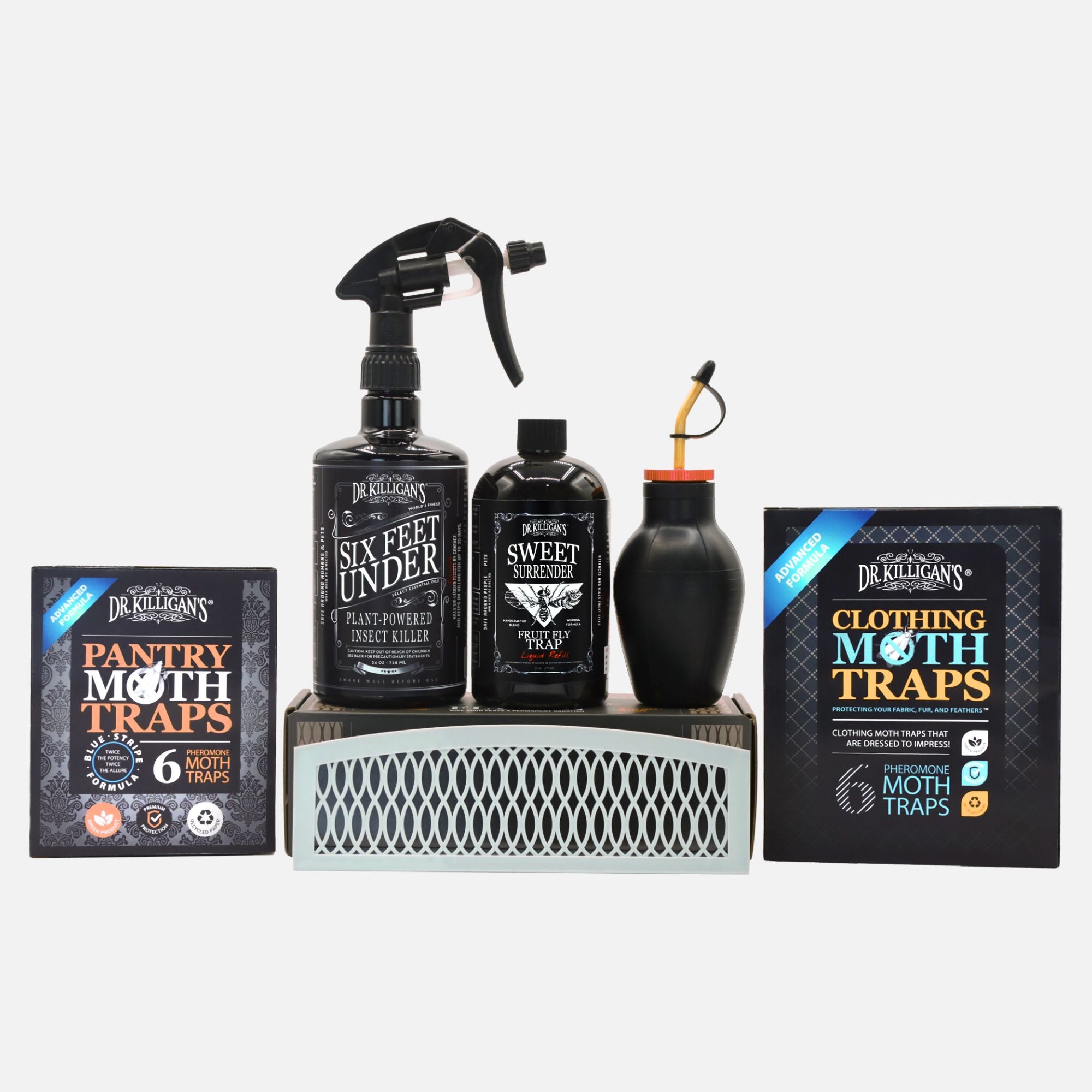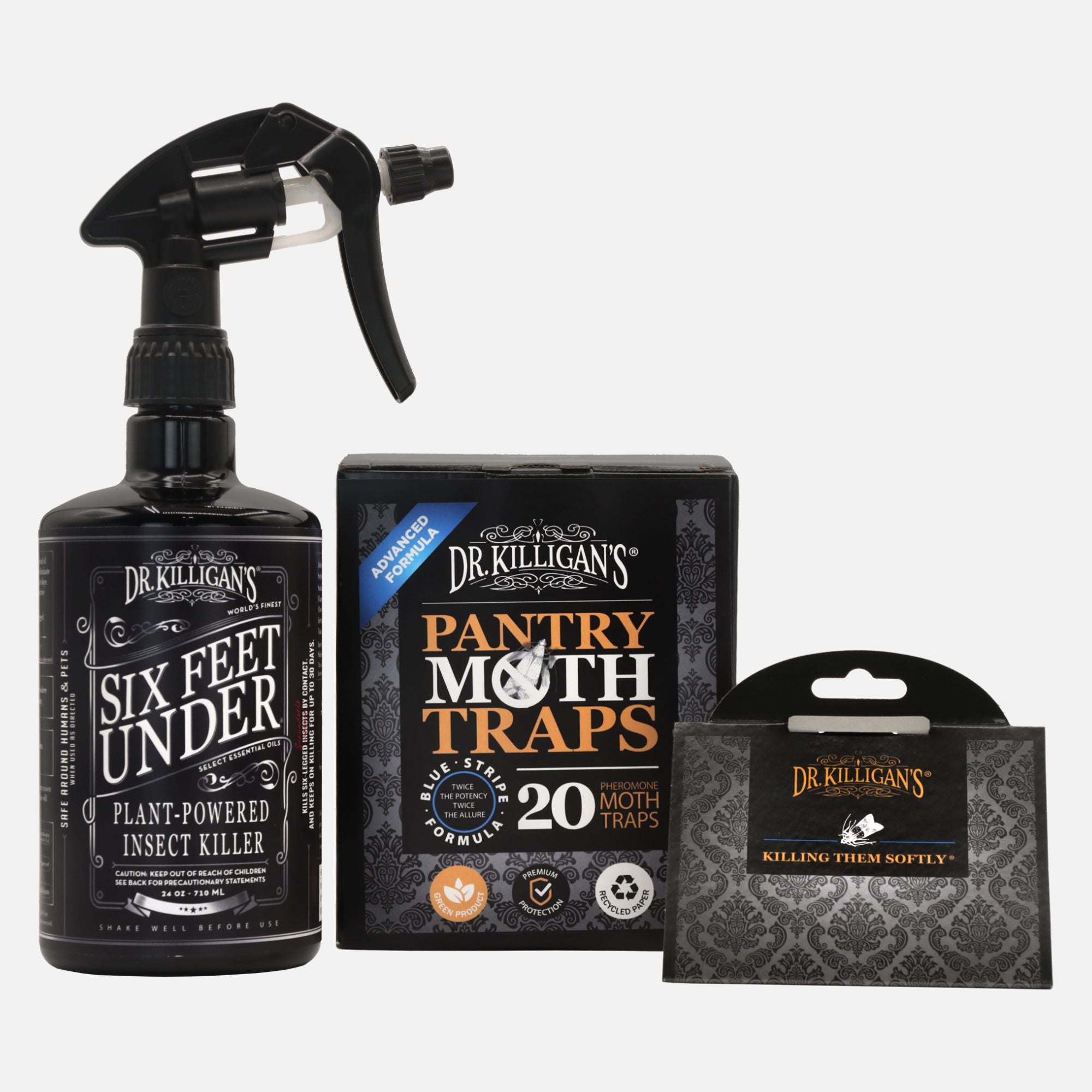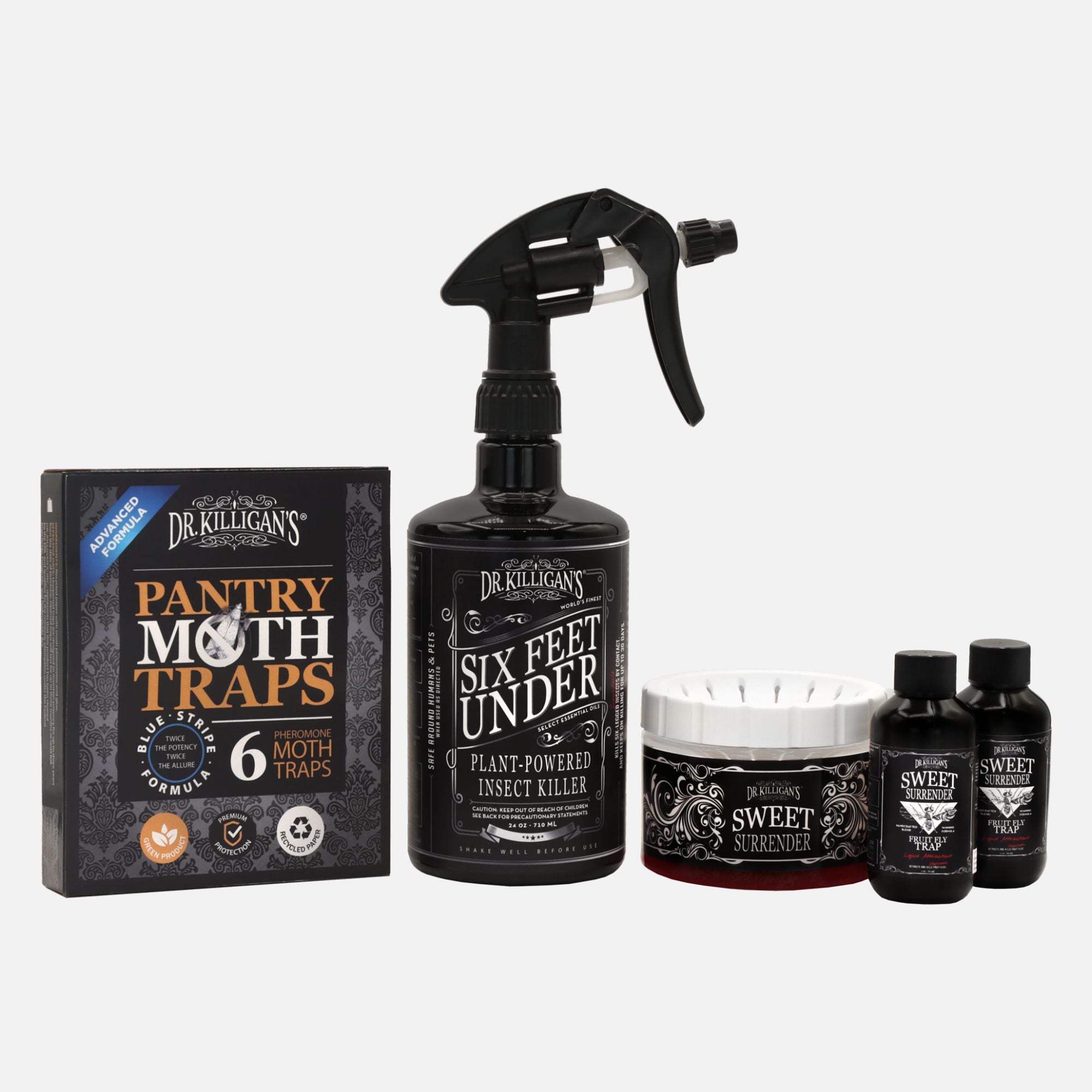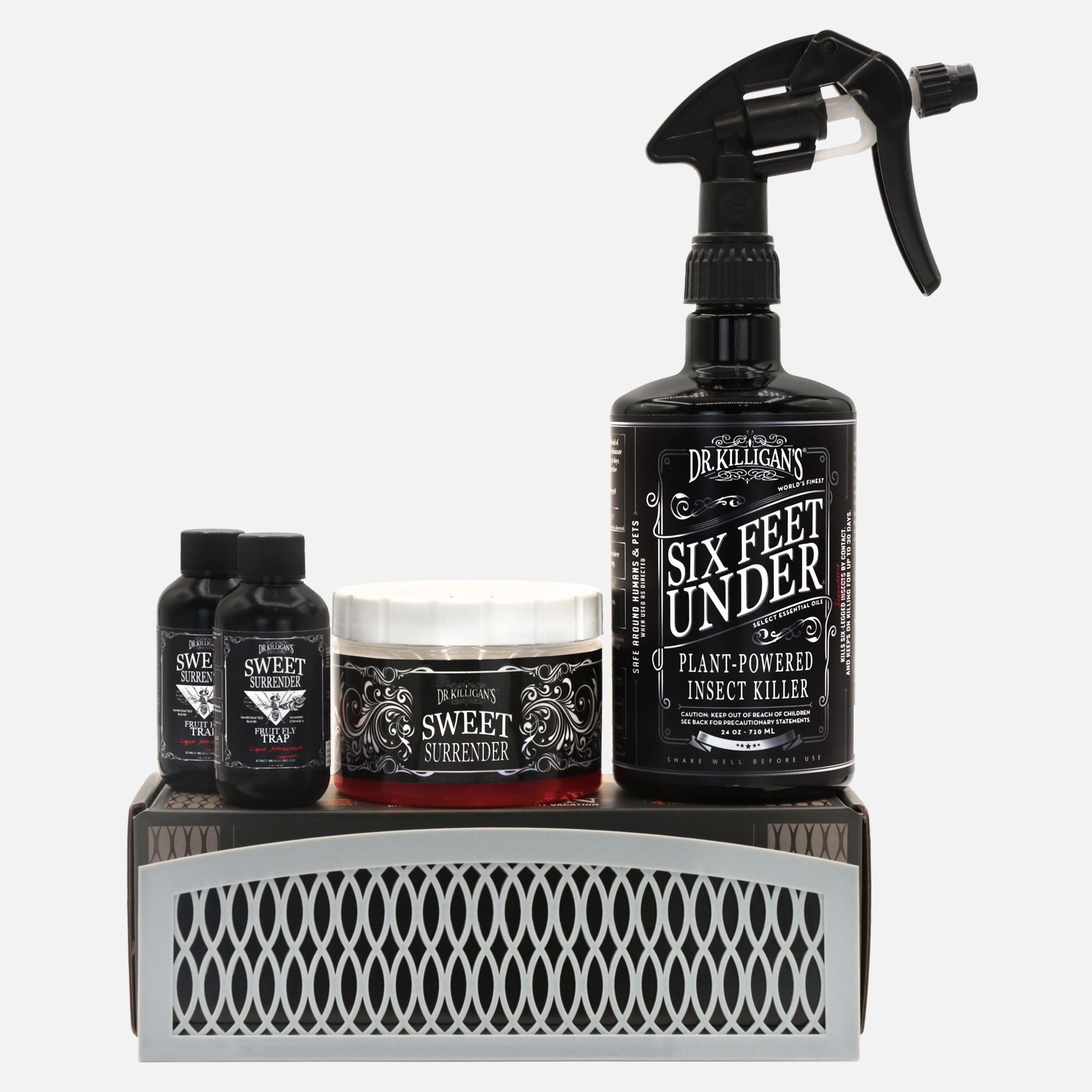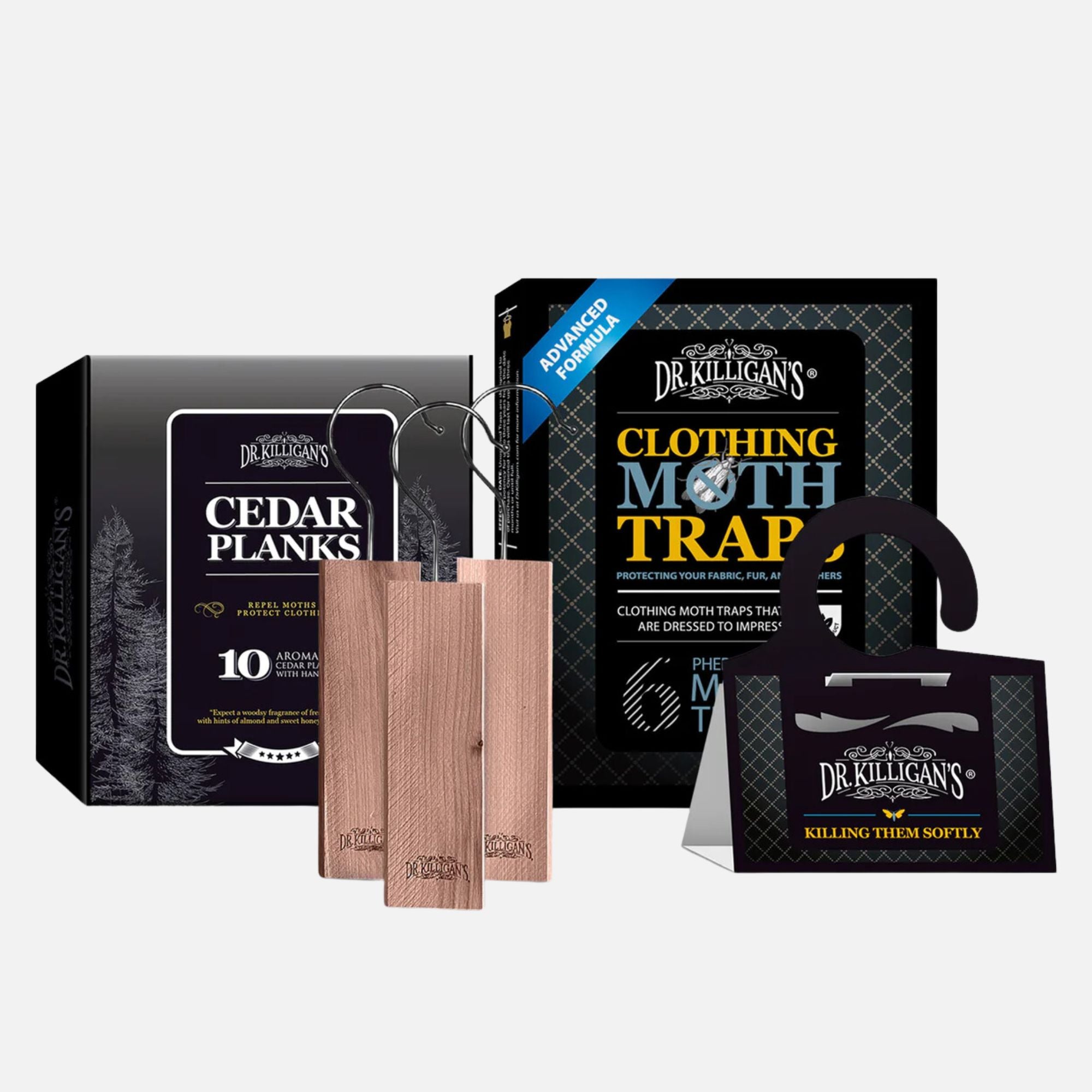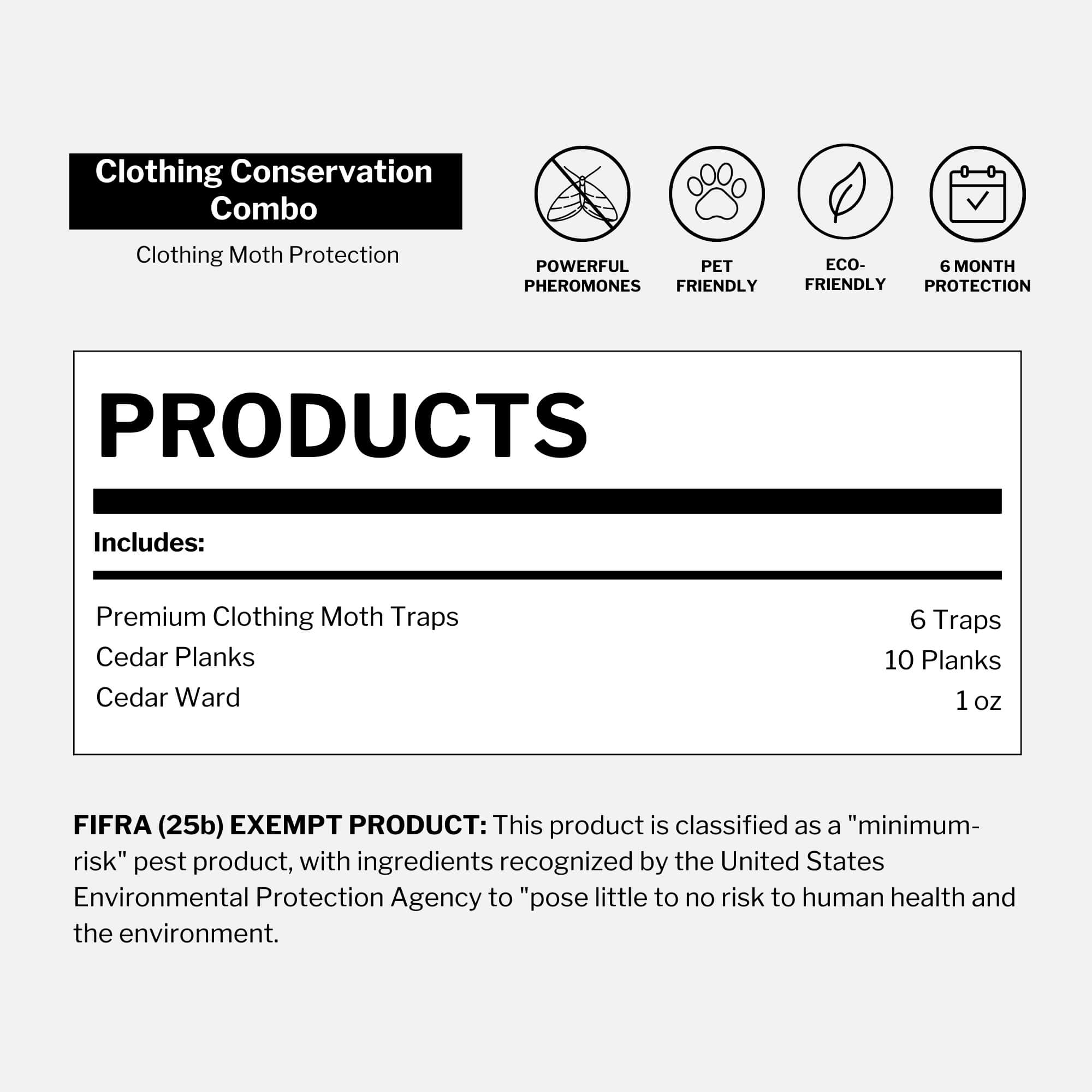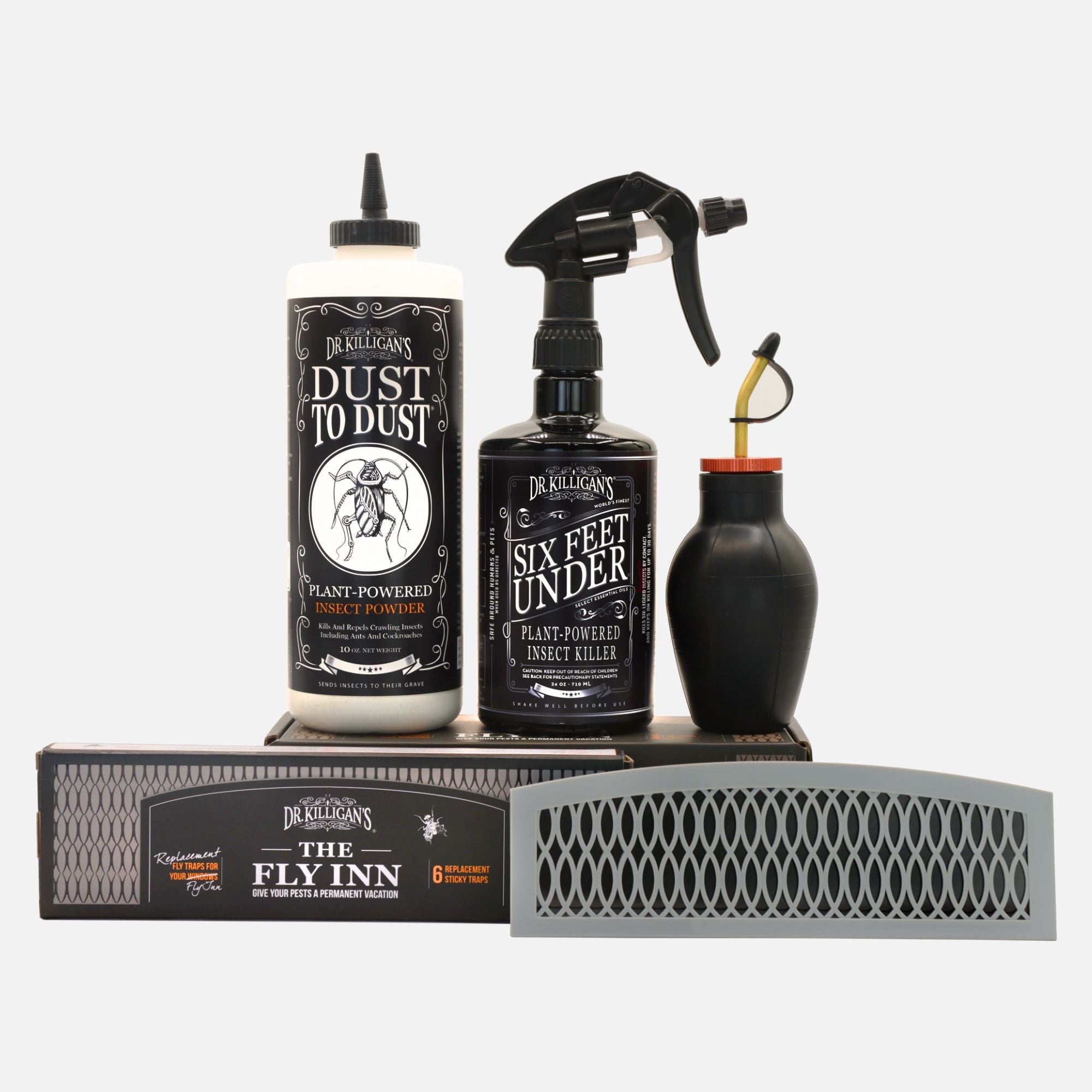Ants cause issues and regardless of whether or not we want to deal with them, we must. We might just see these extremely agile insects around any given corner. We find them indoors, outdoors, in our kitchen or bathroom, or even going up our walls or marching across our tables. They crawl everywhere. Most of them are harmless, just searching for the one thing we all need to survive: water. But this does not mean we want to have them as permanent guests (because there is never just one) in our home. So, how do you get rid of an ant infestation?
>>> Get a FREE sample of our best-selling, non-toxic insect spray
What attracts ants to your home?
Ants are not shy. They are not nocturnal. These colonies of creepy crawlies will appear at any time of day. They may welcome themselves into your home (and life) one day and be gone the next. However, ants do have their particulars—certain conditions that will attract and keep them in your home.
Water leaks

That steady drip under the sink may be of no concern to you, but it has a strong magnetic pull, not only for ants but also for many other insects, including rodents. Why? All living creatures need one thing: water. Rest assured, they will find it!
Unclean conditions
This can range from a sink filled with dirty greasy dishes, a trash can brimming with birthday party leftovers, an unwashed sticky countertop, or sweaty laundry, just to name a few. Something else to consider are the sweet little sticky wandering fingers of a child. Children touch everything, leaving traces of their finger goo on walls, furniture, and their clothes. These can all lead to a marching ant issue.
Pets
Pets can pose a different problem in that they require additional tending. Feeding bowl areas can entice ants into a home. They're an open smorgasbord of food and an ever-present source of water. Even feeding areas that are kept outdoors, but near the home, can be a nuisance and introduce ants into the house.
House plants
Plants provide a good source of water for ants as the damp soil meets their thirsty needs. Dry soil, on the other hand, gives them the opportunity to find areas to nest.
Other factors
You can have the cleanest, tidiest house and follow all necessary precautions, but sometimes you will still see ants around the house, marching two by two, simply because they are in search of water. Especially during dry stretches when there has been little rain, they will venture indoors in search of life’s necessity.
What types of ants will infest your home?
There are many ant intruders that will find your home inviting and decide to stick around. When you get them, you'll want to be able to identify which type you have, as while ants behave the same, some can be more aggressive than others.
Sugar ants
Sugar Ants can be between 1/16th to 1/8th inches long, are dark brown to black in color, and have short antennae. Sugar Ants include Pharaoh Ants, Carpenter Ants, and Pavement Ants. They love moisture-rich locations, like under sinks, and water damaged areas. They do bite, which may burn a bit, but their bites are relatively harmless.

Carpenter ants
They like making homes within wood. Carpenter Ants don’t really bore through solid wood. Their preference is wood that has been water damaged or softened by other types of damage. It's less work! They are black and 1/4 to 1/2 inches long. They also bite and secrete an acidic solution that causes a burning sensation. But, like most ant bites, it is harmless.
Black ants
Black Ants are also known as Tiny Black Ants. Generally, no more than 1/16th of an inch long and, you guessed it, black. They can nest in walls and wood rot. They don’t bite, but do have a stinger. However, due to their size, it cannot puncture human skin. Isn't that a relief!
Fire ants
Fire Ants are the most aggressive of the ants. At 1/8 to 1/4 of an inch long and bright red, they are the most feared. They do not typically enter one's home, but can be found outside and close to the home. Their bite, which is actually a sting, can be very painful and cause a welt. Those that are sensitive to bites and stings can have an allergic reaction.
Most ants are not that aggressive and won’t deliberately attack. Fire ants will only attack when their nest is disturbed. Their nests, as with most other ants, will remain outdoors, which should bring you comfort. When an ant chooses to build a nest indoors, it will usually be a secondary nest, but can still cause an infestation!
Steps to take to deal with ants in your home
To help rid your home of an ant infestation, or assist you in preventing one from occurring, follow these steps.
Get rid of the active ants
Call on the bug experts and don't even consider spraying the area, especially in your home, with a smelly toxic chemical. Dr. Killigan has a kill-on-contact spray that will quickly put those critters where they belong—Six Feet Under. Dr. Killigan’s Six Feet Under® Non-Toxic Insect Spray is toxin-free, child-safe, pet-safe, and designed to dispose of ants quickly. Bonus: It smells good too.
Get rid of the source
Your next step is to find out why ants have made your home their home. Is it a leak, a cleanliness issue, a pet feeding area, your plants, or has it been dry lately? Once you discover the why, resolve the issue. Clean, change your habits, or fix what needs fixing.
Find where they are coming into your home
Are they coming through cracks, damaged siding, windowsills, or gaps in piping? Do what you can to seal outdoor and inside cracks, repair damage to siding or drywall, or mend window and door screens. Keep in mind how tiny ants are - they can shimmy through even the smallest of gaps.
Clean up thoroughly
Nothing is better than a clean slate. Once you have rid your home of the source and sealed up their entry point, give the areas where you have seen their activity a serious cleaning. This may require some extra elbow grease on your part, especially if the ants were seen in cabinets. It may be necessary to empty cabinets, wash dishes, throw out products, and wipe down the innards of drawers and back walls of rooms. The more detailed work you do, the fewer opportunities you'll leave for ants to return.
Use a good spray for maintenance
Once your area is ready to reintroduce normal living back into it, be ready. Have the right product on hand for whatever may return. To get rid of an ant infestation, you don’t want a dangerous chemical to cloud your home. This is another opportunity to add Dr. Killigan’s Six Feet Under Non-Toxic Insect Spray to your cabinet of essential cleaning products.
Dr. Killigan’s can help you rid your home of ants

Ants are an issue that everyone, at some point, has to deal with. No home is safe. When you spot a tiny trail of ants, you want to dispose of them quickly. Dr. Killigan’s Six Feet Under Non-Toxic Insect Spray is an on-contact all-natural ant spray, proven to rid the areas in and around your home of ants. It is made from a blend of cottonseed oil, castor oil, and clove essential oil and its pleasant scent carries a slightly spicy, warm smell—no harsh chemical smells here.
Our team of professionals is dedicated to perfecting the art of Killing Them Softly®. We have designed a 100% toxic-free ant spray that is not only safe to use in your kitchen, but also around your beloved pets and any darling children. We restore peace of mind to your home.
At Dr. Killigan’s, we are continually raising the bar in toxic-free pest control remedies. All of our products come in a design that is pleasing to the eye, returning “classy” to your home. They also carry a 100% satisfaction guarantee. If you are not satisfied for any reason, contact us. We will not hesitate to make things right.



